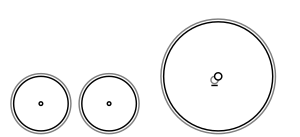4-2-0

Front of locomotive at left
|
|||||||||||||||||||||||
|
|||||||||||||||||||||||
|
|||||||||||||||||||||||
| Equivalent classifications | |
|---|---|
| UIC class | 2′A |
| French class | 210 |
| Turkish class | 13 |
| Swiss class | 1/3 |
| Russian class | 2-1-0 |
| First known tender engine version | |
|---|---|
| First use | 1832 |
| Country | United States of America |
| Locomotive | Experiment, renamed Brother Jonathan |
| Railway | Mohawk and Hudson Railroad |
| Designer | John B. Jervis |
| Builder | West Point Foundry |
| Evolved from | 0-4-0 (USA) & 2-2-2 (UK) |
| Evolved to | 4-4-0 |
| Benefits | Improved stability |
| Drawbacks | Reduced adhesive weight |
Under the Whyte notation for the classification of steam locomotives, 4-2-0 represents the wheel arrangement of four leading wheels on two axles, two powered driving wheels on one axle and no trailing wheels. This type of locomotive is often called a Jervis type, the name of the original designer.
The 4-2-0 wheel arrangement type was common on United States railroads from the 1830s through the 1850s. The first 4-2-0 to be built was the Experiment, later named Brother Jonathan, for the Mohawk and Hudson Railroad in 1832. It was built by the West Point Foundry based on a design by John B. Jervis. Having little else to reference, the manufacturers patterned the boiler and valve gear after locomotives built by Robert Stephenson of England. A few examples of Stephenson locomotives were already in operation in America, so engineers did not have to travel too far to get their initial ideas.
In England, the 4-2-0 was developed around 1840 from the 2-2-2 design of Stephenson's first Long Boiler locomotive, which he had altered to place two pairs of wheels at the front to improve stability, with the outside cylinders between them.
In the United States, the design was a modification of the 0-4-0 design, then in common use. The 0-4-0 proved to be too rigid for the railroads of the day, often derailing on the tight curves and rapid elevation changes of early American railroads. For the 4-2-0, Jervis introduced a four-wheel leading truck under the locomotive's smokebox. It swiveled independently from the main frame of the locomotive, in contrast to the English 4-2-0 engines which had rigid frames. The pistons powered a single driving axle at the rear of the locomotive, just behind the firebox. This design resulted in a much more stable locomotive which was able to guide itself into curves more easily than the 0-4-0.
...
Wikipedia
